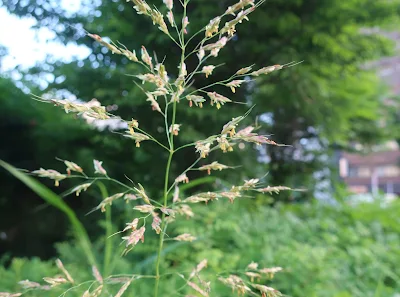英語の後に日本語が続きます。
Johnson grass or Johnsongrass (Sorghum halepense) is native to Asia and northern Africa, coming to, or (as an invasive species) invading, Japan in around 1945. Now, the weed can be found across Japan but Hokkaido, i.e., the northernmost part of Japan. I looked up the origin of the name, finding that the plant was named after an Alabama plantation owner, Colonel William Johnson, who introduced the plant to his farm in around 1840 as a prospective forage. Johnsongrass, however, has been found to become poisonous under stress (e.g., frost) and be toxic to livestock.
Despite such hardiness and toxicity, however, Johnsongrass produces tiny and cute flowers.
 |
| 2026/6/29 |
 |
| 2025/6/26 |
 |
| 2026/6/29 |
 |
| 2026/6/29 |
 |
| 2025/6/26 |
 |
| 2025/6/26 |
(If you wish to post your comment but don't have a Google account, select "anonymous" from the drop down menu titled "comment as"!)
セイバンモロコシ(西播蜀黍)です。日本には1945年ぐらいに到来(侵入)したと言われ、今では北海道以外全国で見られます。アラバマのジョンソン大佐が自分の農場に家畜のえさとして導入したので英語では、Johnson grass と言われていますが、霜などの強いストレス下に置かれると毒性を持つので家畜のえさとしてはいまいち?なようです。
でも、花はちっちゃくてとってもかわいくありませんか。
(Google アカウントを持ってない方は、コメント記入後に「Google アカウント」をクリックし、「匿名」か「名前/URL」を選択してからご記入ください!)






0 件のコメント:
コメントを投稿